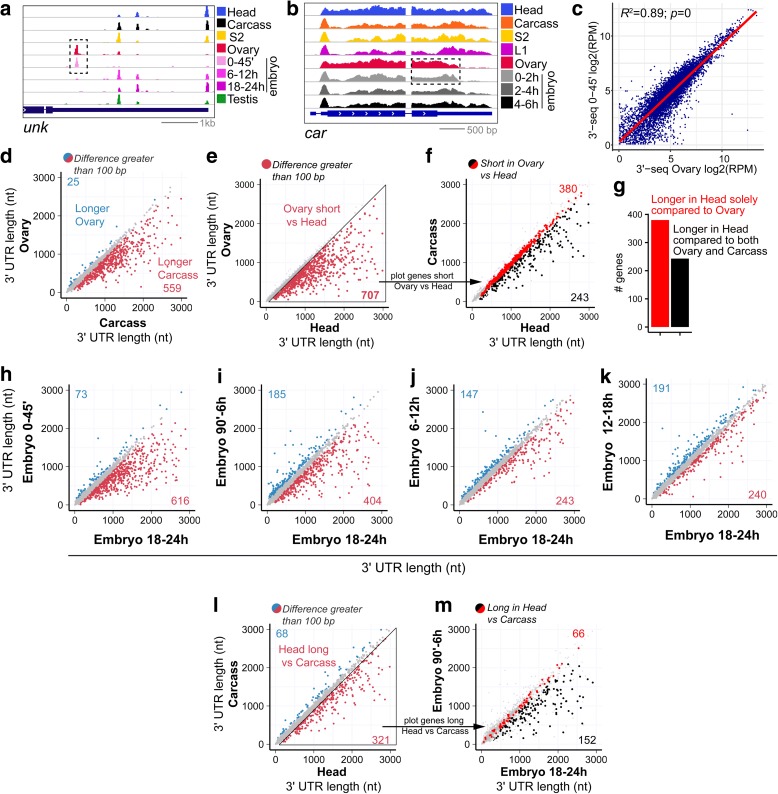Fig. 3.
Specific patterns of APA in the ovary and across embryogenesis. a Examples of a gene that expresses a pattern of 3′ UTR isoform expression specific to the ovary and early 0–2 h embryo, compared to a range of other developmental stages, tissues, and cell lines. b RNA-seq data example of 3′ UTR shortening of a maternally deposited message. Dotted line rectangle shows common pattern of 3′ end isoform expression between ovary and early embryo. c Comparison of normalized 3′-seq data between ovary and very early 0–45-min embryos. Test of correlation with Spearman rank order rho and p value shown on top of the graph. d–m Weighted 3′ UTR length comparison between samples. Weighted 3′ UTR length is obtained taking the average of all 3′ UTR isoform lengths per gene weighted by the contribution of each isoform expression. Genes are expressed at a minimum of 5 RPM in all samples. Genes whose weighted 3′ UTR length differs by 100 bp or more between samples are colored, whereas all other loci are in gray. d Carcass expresses longer 3′ UTRs than ovary. e Head expresses longer 3′ UTRs than ovary. f When the subset of genes that is shorter in ovary vs head (from e, loci within triangle) is compared for length profile between carcass and head, we see that only a subset of them is extended in head. g Barplot summary of head vs. ovary and head vs. ovary + carcass 3′ UTR comparison. h–k Embryogenesis timecourse in which successive embryonic timepoints are plotted on the y-axes against the common, final embryonic timepoint on each x-axis (18–24 h). Across the timecourse of h 0–45′, i 90′–6 h, j 6–12 h, k 12–18 h, we see that progressively fewer genes are differentially shorter with respect to 18–24 h embryos. This reflects a 3′ UTR lengthening trend across embryogenesis. l, m Head lengthening and embryonic lengthening reflect a similar gene signature. l Defining the genes that are lengthened in head vs. carcass. m When these genes were overlaid onto the set that were co-expressed in both early and late embryos, we observe unilateral trend that they exhibit longer 3′ UTRs in 18–24 h embryos compared to 90′–6 h embryos

